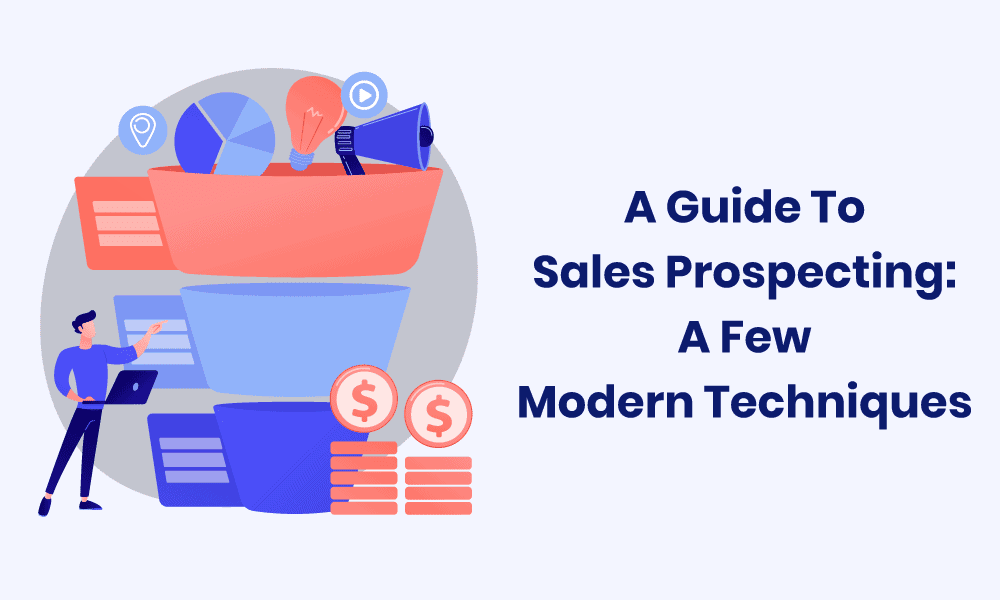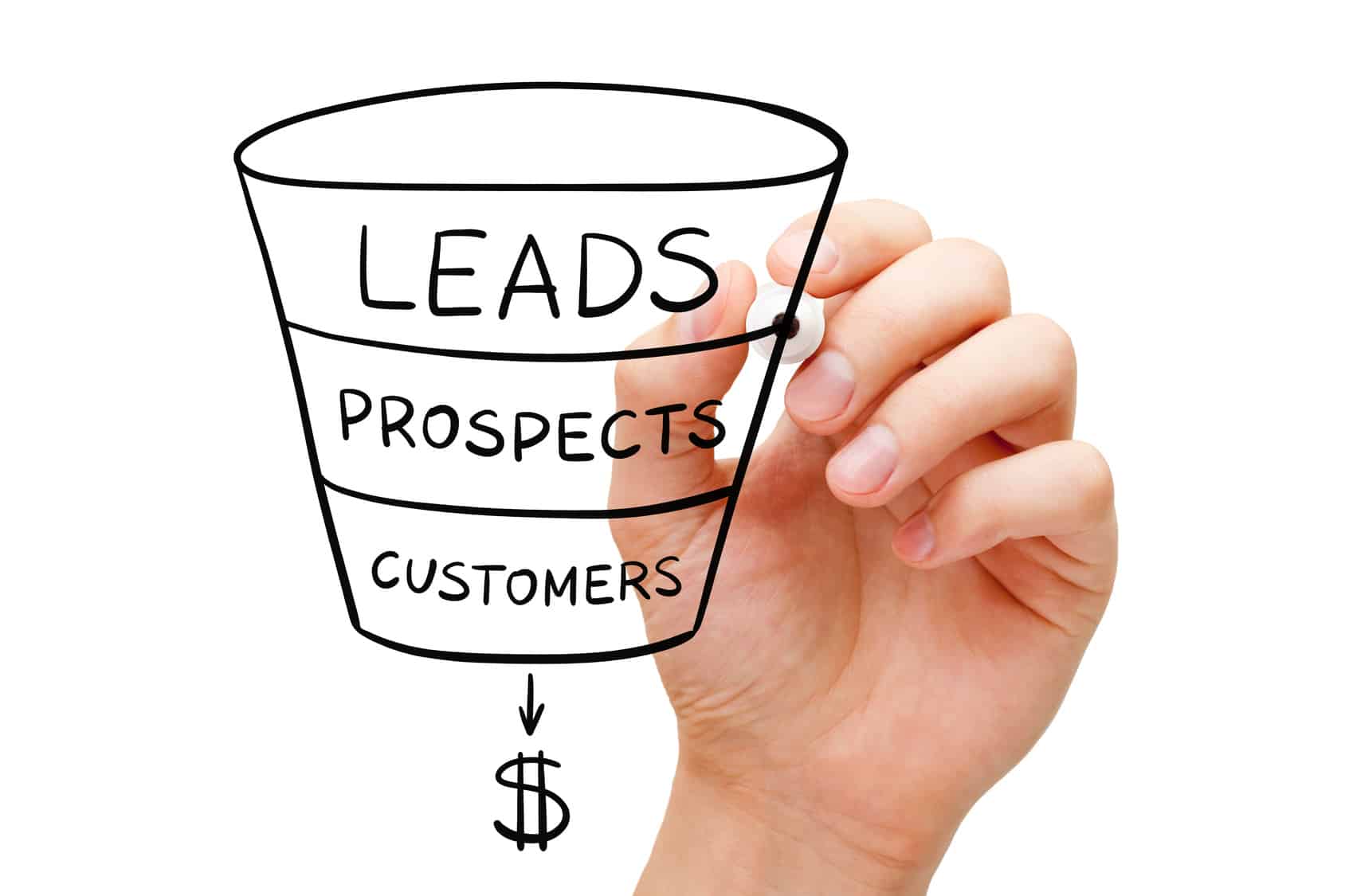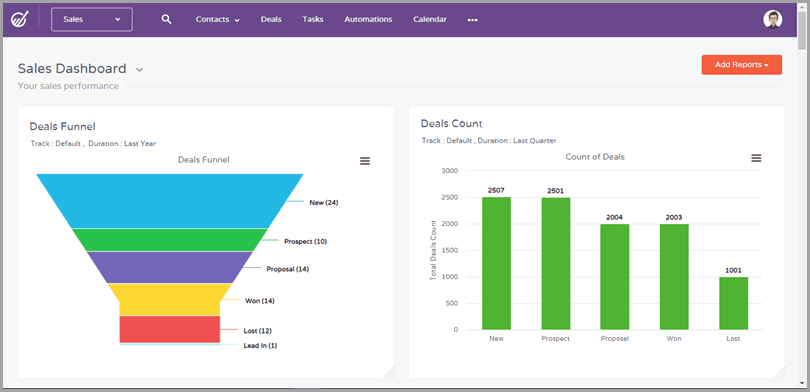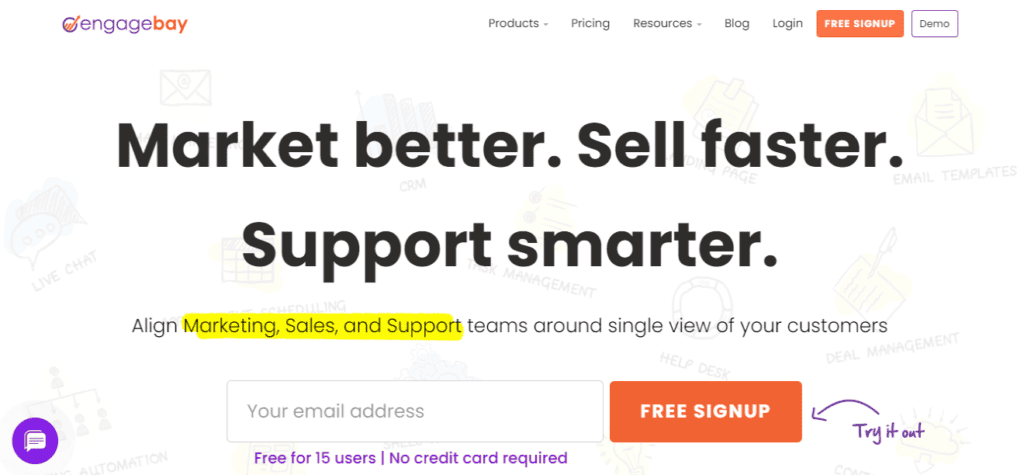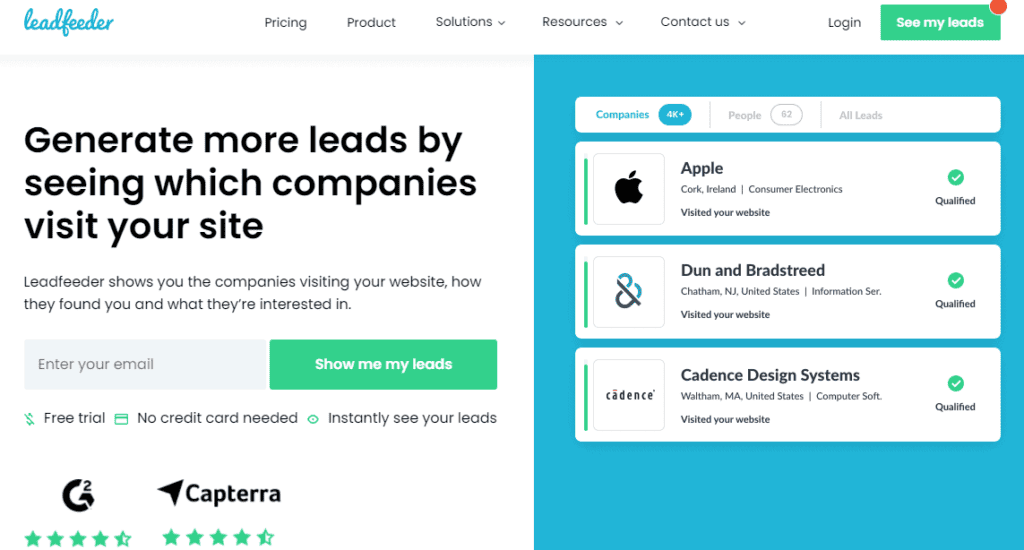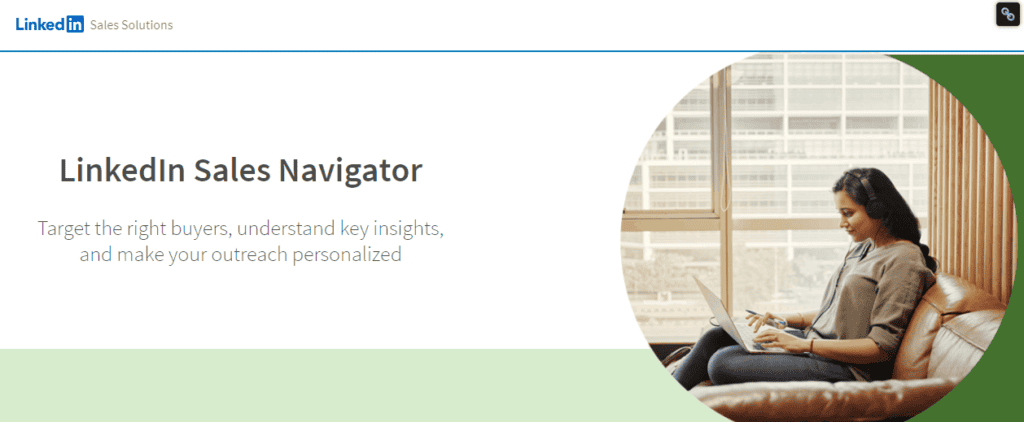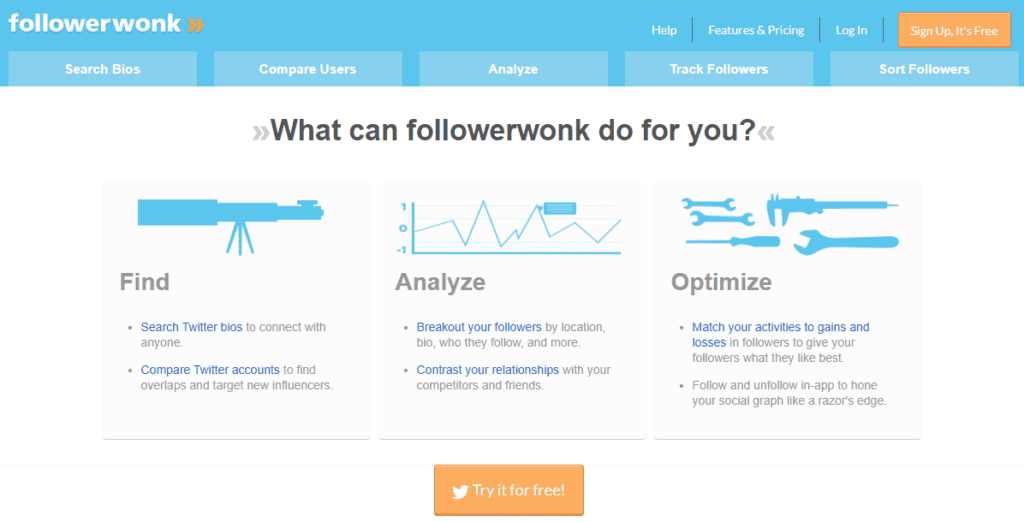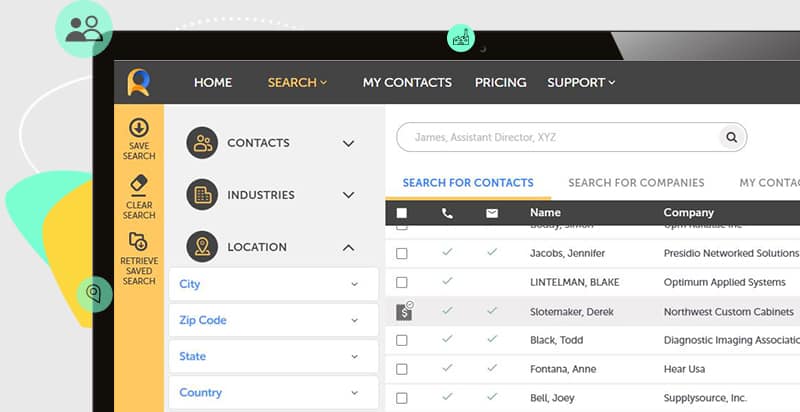What drives a business?
Sales, of course! So as a first step in the decision making process, it would seem obvious to spend a considerable amount of time every day formulating strategies to drive more B2B sales or any other type of sales.
That is called ‘sales prospecting‘.
Sales prospecting is one of the most fundamental tasks in any business.
When you address your sales pain points and do it right, it will provide value and you end up getting a fresh client.
Now so far, it has been “obvious”. However, the real picture is sadly not in sync with the obvious.
You would think that if getting the right business is the cornerstone of your enterprise, then your sales professionals must be spending a lot of time in prospecting for new sales opportunities, isn’t it?
However, according to this article published on Engagesellig, very few sales guys admitted to spending a considerable amount of time hunting for new business.
Just 17% of all salespeople surveyed said they spent a day in a month on a lookout for hot business opportunities!
This number is pathetic considering that sales form the bedrock of every business.
But, let’s give these guys the benefit of doubt assuming they don’t know the nuts and bolts of effective sales prospecting.
Or, better still, they don’t know that the art of scooping out more business has evolved into a complex science; and that hunting for potential buyers or new sales leads is not limited to just dialing random numbers that you note down from business directories.
Read this article to find out the best sales prospecting tips and how you can fine-tune your sales discovery skills and be a good fit for your team.
Also, find out the best practices on how your team can fill up your sales pipeline with effective new leads.
Table of Contents
What is prospecting in sales?
In simple words, sales prospecting is an opportunity for creating more business by formulating strategies to acquire new clients.
Normally, a sales pipeline comprises the following stages- Suspect, Prospect, Approach, Negotiate, Close, and Operate.
When a website visitor is suspected to like your product, he is termed a Suspect.
When this visitor tinkers with your product in various ways, you may consider him as a Prospect.
So, the trick is to get people on to your site, inside your store, etc. and make them interested in your product.
This process of making people not just aware of your product but also interested in it is called sales prospecting.
Shopify, on the other hand, puts sales prospecting definition as the first stage in the sales process.
The idea is to identify a database of potential customer profiles so that they are later converted into paying customers.
However, you may ask why the terminology – sales prospecting?
The word prospecting has an interesting history.
In the 19th century, gold miners were all the time digging into the ground to find the yellow metal.
They dug up the bottoms of creeks, the sides of mountains, and other places in the Western United States.
However, their mining procedures went futile without the right plan.
Thus, they began to look for fruitful prospects, and strategized the mining process, given it the word “prospecting”.
Today, the process of finding paying customers is no less important than gold prospecting, and that is why buyer prospecting is an essential part of the overall sales process for the sales teams.
However much like the mines, vague hit and trial don’t reap benefits in business too.
A sales funnel isn’t meant for every individual or even lead you may have, thus identifying the right leads becomes important.
This is why sales prospecting is so crucial!
And if you thought that the prospecting process is quite easy and smooth, you are mistaken.
Prospecting for buyers is quite a daunting task and it takes a lot of skill and experience to sieve out your potential buyers from your prospecting list.
However, to measure who’s a good fit for doing sales prospecting right, different experts have different definitions of the whole concept.
RingDNA has an interesting take on the meaning of prospecting.
According to it, prospecting is the process of reaching out to new leads through calls, email outreach, or messages in the hope of your sales teams converting them into sales opportunities.
Sales reps can reach out to those new leads that have gone cold or get after absolutely new sales opportunities.
Many organizations have dedicated inside sales teams whose only task is to master the art of sales prospecting, day after day, and night after night.
Prospecting for sales is done with the help of advanced tools and techniques that we shall talk about later. Like we told you, the very definition of sales prospecting can vary.
Shapironegotiations.com agrees with the RingDNA definition but modifies it further.
It says prospecting for sales means reaching out to new leads that have gone cold and also to people who have lost touch with the brand.
Further, this process includes researching and categorizing leads based on their likelihood to convert.
With each industry and even company, the definition may vary.
However, to summarize it up, prospecting for sales is the process of converting new leads into profitable business opportunities.
This process requires several tools and techniques and is quite advanced in nature.
Almost all business websites define prospecting in sales in similar ways.
Please note that we have used the words “lead” and “prospect” many times in the above paragraphs. What do these words mean exactly?
Read also: 7 Tips For Turning Prospective Clients Into Paying Customers
Difference between lead and prospect
Image Courtesy: Leadfuze
At this juncture, we would like to state that it is important to know the difference between a lead and a prospect.
For sales teams, it is imperative to know the subtle difference between these two words. Unless they know what they stand for, their sales prospecting efforts would come a cropper.
If you look it up a dictionary, you would find that a lead is a slight or indirect pointing to something. Your leads must be a good fit into some demographic or firmographic data.
Not all leads may lead to sales, but some of them may show some potential.
For example, when it’s time to show your ad or content to a large number of people in your target audience, some of them may take note of it. This set of people constitutes your lead.
Let us take the example of a newspaper to understand what a lead vs prospect division looks like in real-life settings.
The most important part of a morning newspaper is its cover page, right? People look up at this page first thing in the morning when they get their copy from the hawker.
If you are an editor, you would always be on the lookout for stories that can make it to the front page.
You would be plied with hundreds of stories from anxious reporters, each hoping that their story makes it to the front page.
But you, as an editor, would be looking for those stories that can excite your reader; stories that can match the buyer or reader persona of your newspaper.
Please note that the operative word here is “can”.
There is obviously no certainty that it will, but a high probability. And also note that here we are talking about your target reader or consumer.
So, all the time as an editor, you are sieving your stories through the funnels of 1) your target reader base, and 2) the word “can”. Those stories that get past these funnels are called leads.
Now, let us bring this to the world of marketing, where leads are individuals or organizations, but very much alive and with a brain of their own, thus unpredictable too!
So, a good fit lead would be 1) falling under your targeted category, and 2) they “can” buy your product.
Again, no guarantee they will but are likely to, based on their recent activity and interest shown towards your brand.
In the marketing sense, leads can be obtained via the following methods:
Names on the list: These names have been added by yourself or the list has been purchased from a third-party.
Referrals: Names that you get from your clients or friends.
Responses: Those people who have responded to your email, phone call, or an SMS.
Advertising/Inbound: Those people who have come to you directly after reading/ looking up at your ad/ content.
These leads are hot and your sales reps would just love them.
Now that you have some leads in your sales pipeline, you need to further filter them so that you get your sales prospects.
To do so, you need to ask your leads a few questions, which may vary from one organization to another.
Depending upon the answers that you get, you will get your new prospects, who may turn out to be your revenue sources.
Now let’s find out who’s a typical prospect.
Usually, for most sales funnels, there are 3 fundamental conditions of being a sales prospect.
These are:
1) The sales prospect must fit your target market.
2) She should have the budget or money to buy your product or service
3) And lastly, the sales prospect or potential customer must have the authority to make the buying decisions
So, sales prospecting activities is essentially the process of identifying those buyers who fit the above criteria.
Let us take an example.
Suppose you are in the business of selling enterprise targeted insurance policies. To sell your service, you get a list of potential buyers in your targeted audience.
One day, you make a phone call to one of your targeted buyers and realize that he doesn’t have the authority to make a buying decision.
Is this man your sales prospect?
No, because he doesn’t meet one of the 3 above-mentioned criteria. He is just a lead.
So, we start in the sales process by first getting leads from various sources, and then run them through the 3 sieves listed above.
Those who pass these filters are qualified sales prospects. These are the guys who are most likely to buy your product or service.
Please note that just by having an intention to buy doesn’t qualify a lead as a sales prospect.

Why is prospecting important in sales?
Image Courtesy: Crazycall
The importance of prospecting efforts can’t be emphasized enough.
If we liken an enterprise to a human body, then sales prospecting is its heart; it is continuously pumping fresh blood (business leads) to the various organs of the body so that the enterprise not just survives but grows as well.
The sales prospecting process is important on an individual as well as institutional levels.
Most of us who are in a sales environment right now haven’t had much experience in the prospecting technique while we were in our school or college.
We took up sales in our current jobs because we thought we could do it easily and naturally.
For many of us, sales are about glib talking; we imagine that by merely speaking in a convincing manner, we would be able to close a deal.
We hardly think in terms of leads and prospects. Sales pipeline and processes are alien terms for even the most professional sales executives among us.
This ignorance toward the sales prospecting process impacts our organizations as well. An ineffective sales pitch won’t help our company at all.
We miss our targets, and this further increases our anxiety levels. The only thing coming between you and sales is the missing impactful and fruit-bearing strategy.
How to fill the gap? By Sales Prospecting!
That is why it is important to learn to prospect in sales; we help our organizations achieve their goals, and in the process improve ourselves professionally too.
Some organizations like Salesforce teach their employees “Strategic Prospecting”, an advanced sales prospecting tool developed by JBarrows Sales Training.
There are plentiful tools and CRMs to help you take your sales on the modern road.
Why restrict yourself to just cold calls and cliché sales email templates, when you could use a sales CRM like EngageBay to keep you a step ahead of your competitors.
Say goodbye to expensive, complex Sales CRM software with a steep learning curve.
Once you become adept in business prospecting, you become a trusted adviser for big and small firms.
You know exactly when and where to pitch, how to pitch, and how to get optimum results.
An important aspect of prospecting is to make sure you create the right strategy for the right accounts.
There are other aspects as well such as:
- You develop specific messaging for specific leads.
- You reach out to your clients at the right time.
- Mix email and voice calls effectively so that you get effective results.
- Once you are successful in your prospecting, you make prospecting a habit.
Strategic prospecting is all about using your numbers wisely. In a day, there are only a limited number of emails and voice calls that you could send/ make to reach your leads.
In strategic prospecting, you make an informed decision on when to make that call, who is the right person to make that call, and what should be your next step.
No doubt, your activity pool becomes smaller (lesser number of leads), but the probability of converting those leads into your new prospects becomes significantly higher.
So strategic sales prospecting is all about getting more and better results from fewer efforts. ‘This is the age of smart work, not hard work!
To understand how business prospecting affects the sales cycle, let us go to the sales process as understood in the 1900s.
The first element of this process is making people aware of your product or service. The next element in this chain is garnering their interest.
When your target customers are sufficiently interested in your product, they may express desire in it.
Desire is followed by action, i.e, your ideal customer finally decides to buy your product or your service.
Now imagine, that your sales rep (after identifying your lead) starts expecting that it is wanting to buy your product.
The sales rep hasn’t made the lead aware of your product, neither has he ignited any desire in the lead at all.
The lead may be interested in another product or none at all but just seemed to like content relevant to their needs.
However, jumping on the conclusion that every lead is the same and is a sale could be a blunder!
The net result; your valuable lead quickly loses his interest in your offering and moves away.
If your sales rep continues this behavior, not only do you lose valuable business opportunities, you also acquire clients at higher costs.
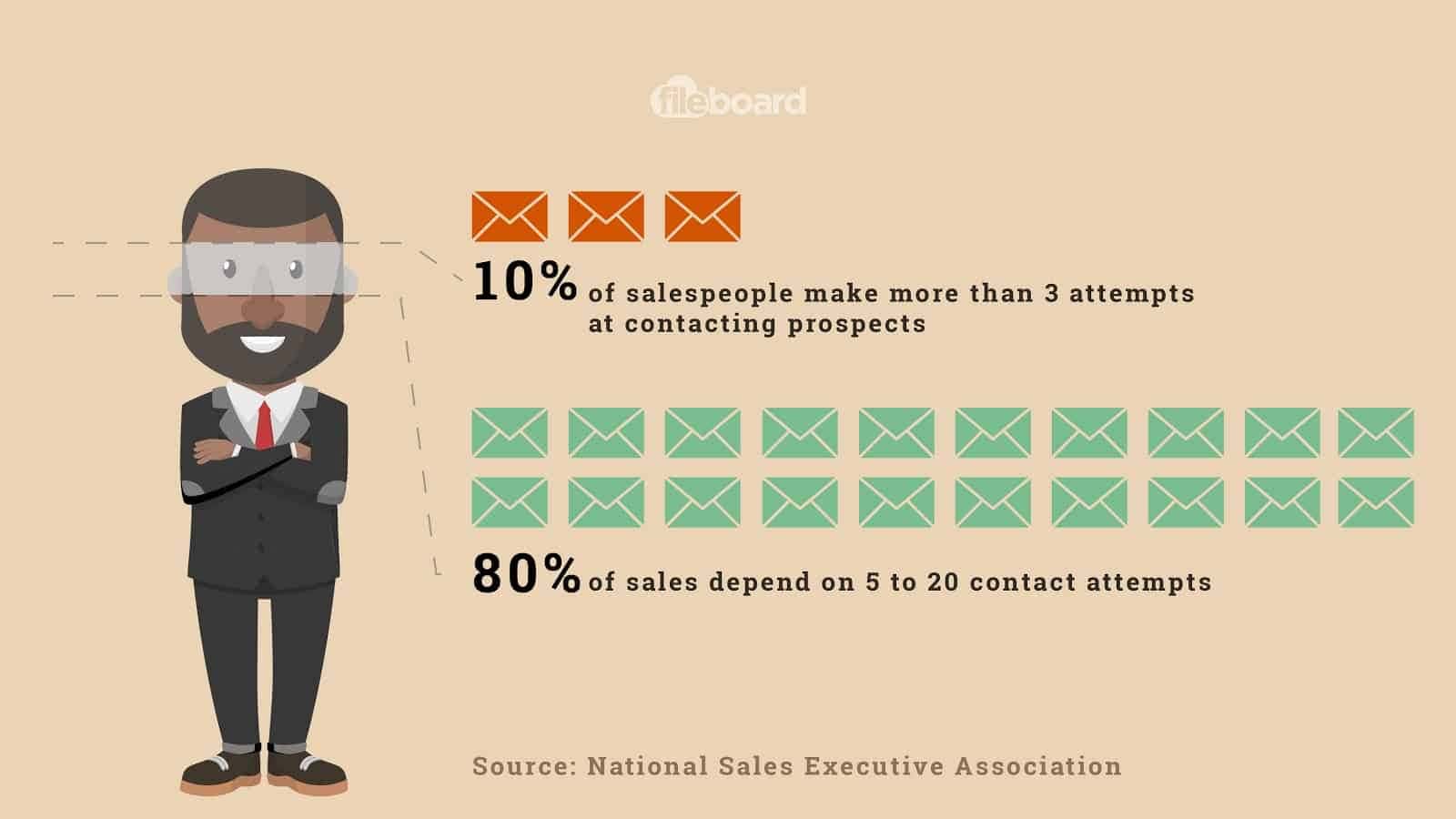
Neil Kokemuller in www.smallbusiness.con.com offers some other reasons why you should be prospecting for your sales leads more often.
- The number one reason has got to do with sales attrition. According to Kokemuller, each year, nearly 15-20% of all our sales leads go away i.e. they go cold. Therefore, unless we keep on building upon our sales lead pipeline, we won’t have any leads to fall back upon. Needless to say, when you have a big pool of sales leads, there are greater chances of them converting into prospects and eventually into sales.
- More sales mean lesser production costs and fewer business risks. It takes fewer dollars to produce an additional unit and reduced costs keep the company competitive. Moreover, when there are more sales happening, even the sales reps win because of increased sales commissions.
- Effective prospecting for sales can also help you develop newer sales and marketing strategies. When a sales rep contacts a lead, the latter may or may not decide to buy your product. However, during this sales prospecting process, your rep may uncover several motivations or reasons why that lead will or will not buy your product. Based on this insight, your organization can then devise alternate sales strategies for various customer groups.
- Through efficient buyer prospecting, your sales reps can cover a lot of ground too. For example, after efficiently prospecting sales process and achieving their targets, your reps can use the additional time as prospecting time to develop newer leads, which can later convert into hot sales prospects. Now that we know why business prospecting is important, let us look at how our sales prospecting skills can be enhanced.

How do you prospect for a new customer?
While this is a trick you master with practice, the practice element should never stop.
Unless we keep prospecting clients continuously, we shall keep staring at loss and bankruptcy.
Clients are the bedrock of any business.
Geoffrey James in an excellent article lays down a few methods for prospecting customers.
A smart way to acquire them is to look out for clients that are already or have bought stuff similar to yours.
A) These clients come from the following sources:
- Referrals: These are potential customers who have been referred back to you by your existing clients.
- Networking: You may be connected with several friends or professionals on social media and professional networking sites like LinkedIn, Facebook, Twitter, Medium, etc. Reach out to them as they and you share some attributes that may be of help while selling.
- Website visitors: These are those potential customers who have visited your website or have filled out some form or the other. These people are hot leads and have come to you voluntarily after reading your content or clicking your ad. These leads are very important for your sales prospecting process.
- Purchased lists: These lists typically comprise people who are more likely to buy your products and services. These people have some specified designations and have the authority to make the buying decision.
B) Once you have acquired these leads, it is time to ask them some qualifying questions and take one step ahead towards achieving more sales success.
These questions are intended to filter them on the basis of:
- Budget: whether these leads have the required budget.
- Authority: whether these people have the required authority to make a buying decision.
- Intent: Lastly, check whether these leads actually want to buy your product or not.
C) After you have filtered these leads into prospects, you need to figure out how many of them will finally convert into sales prospects.
Let us say that for every 5 leads that you have in your pipeline, 1 becomes a sales prospect.
If you need 50 prospects, then your pipeline needs to have 250 sales leads, give or take a few, at any given moment of time.
Of course, you also need to put down a certain figure against each of those target prospects (in terms of revenue) in order to find out your monthly revenue.
Please note that this formula is meant to only indicate a fair business prospecting technique. It is just an indicative activity.
D) Listen clearly to what your client is saying.
In the same Inc.com article, Geoffrey James says that often sales reps ignore the urgency in their clients’ voices.
We are so busy with our sales talks that we fail to notice that the client wants to buy our product right now.
Learn to hear words like these:
“We’ve been wanting to buy something like this for quite some time.
How soon can you install this?
I was thinking of contacting your firm for this product.
Oh yes, we definitely need to talk about this pretty soon.”
Refine your sales prospecting system and polish your talk by training to hear words like these and you will surely pick up new business prospects.
E) Lastly, you should have a positive mental state during your sales prospecting activity. While failures will come your way, you must also anticipate successes.
Unless you are upbeat most of the time, you will never be able to attract good sales prospects your way.

Sales prospecting methods
Image Courtesy: About CrunchBase
Over a period, many successful sales organizations have developed quite a few sales prospecting methods for their sales reps.
Let us look at some of the best ways to understand prospect outreach efforts via their contact information and find out which of these are applicable to our businesses.
According to Rain group, phone calls are still the second most preferred buyer prospecting method after e-mail.
Nearly half (49%) of 488 buyers contacted said that for them, the phone was the second most preferred method for contacting. Social media followed closely.
The other effective sales prospecting methods are:
- Calling existing clients
- Reaching out at events
- Sending warm emails
- Calling past clients
- Cold calling
1. Phone calls
These remain one of the most popular methods of reaching out to your ideal customers. There are two kinds of phone calls- cold and warm.
Cold calls are those when you contact your clients for products and services that they are unaware of.
Warm calls are for those clients who know that you sell a specific product or service.
2. Email
Thanks to the internet, now sales reps can quickly draft prospecting email templates and send them across to thousands of leads within a matter of seconds.
Before you try out this sales prospecting method, please make sure to do a little bit of research on your leads, segment them, and draft separate mails for each customer group.
You should also keep a prospecting plan template to devise your mails.
There are also certain tools that let you post your mail when your ideal customer is at his computer so that your mail open rate is higher.
3. Facebook groups
This social media networking platform is much more than just socializing. Facebook groups help you reach out to your intended audience, engage with them, and win business.
To help you do this, you can use a tool like Rebrandly URL Shortener to add anyone who clicks on the links you share in these groups to your retargeting audience.
This way, you can recapture their attention and nurture them towards a conversion at a later stage, especially if they’re not ready to buy your product or service right then and there.
4. LinkedIn groups
Unlike Facebook, LinkedIn is a more focused social media platform for business owners and executives.
Like Facebook groups, you can join one of the various LinkedIn groups, engage with other members, and make meaningful business relationships.
There are other platforms too that help you in sales prospecting like Quora, Reddit, etc.
Best sales prospecting techniques
At this point in our discussion on sales methodologies, you might be tempted to ask; which is the best sales prospecting technique for sales reps?
There is no correct answer to this otherwise interesting question.
Today, sales reps must be ready to use either of the two techniques (inbound and outbound) responsibly. Each of these sales prospecting techniques has different characteristics and can work to your advantage.
Outbound sales prospecting techniques comprise cold calls and spamming social media with unsolicited advice on products and services.
In these techniques, research is superficial, and often there is little or no context while establishing contact with a sales lead.
On the contrary, inbound sales prospecting techniques comprise warm emails to leads that have shown interest in your product or service.
On social media, your messages are directed to those who have taken note of your offering positively.
Communication is contextual and your lead is more likely to respond to your email favorably in this kind of sales prospecting.
Best sales prospecting tools for engaging your prospect in 2022
The biggest challenge before any sales organization is to fill its sales pipeline every day. Humanly, this is next to impossible.
The next best thing to accomplish is to use the right prospecting tools that are available in the market.
While there are various software in the market to take care of that, not all fall under your budget or are personalized enough to cater to your requirements.
Thus, we researched and scooped out the 5 best sales prospecting software that are ideal for small and medium enterprises financially and strategically too.
These are the best sales prospecting platforms that you can use to meet your business goals:
1. EngageBay
This tool provides solutions in the marketing automation, CRM, and sales bay verticals and has 24/7 customer support.
Its popular marketing features are email marketing, lead generation tools, landing pages, and marketing automation.
A complete sales and marketing package for your enterprise, EngageBay leaves no stones unturned when it comes to providing the right infrastructure to put everything about your business in structure.
Free for 10 users.
2. Leadfeeder
This software lets you know which companies visit your website and leave without even filling up your form. Leadfeeder is great for small and medium enterprises that want to scale up fast.
There is a 14-day free trial period and paid plans start at $59 per month.
3. LinkedIn Sales Navigator
If you are a professional or a business owner then there’s no way you can avoid LinkedIn.
This platform’s Sales Navigator is a great tool for all those who want to do sales prospecting at an affordable cost. At $65/month, you can use its advanced filters, save leads, and do much more to convert leads into target prospects.
4. FollowerWonk
Twitter has come up with an amazing lead filter mechanism called Follower Wonk. With this tool, you can locate Twitter users with specific keywords and send targeted messages to them.
It comes as a free tool but beyond a point, you will have to subscribe to this tool at $29/month.
5. ProDataLabs
ProDataLabs is a world-class B2B database provider. With an increase in demand for the database, they have served 1000+ companies by providing authentic and qualified data, which is verified by human intelligence.
Attain access to data of various Industries like Construction, Healthcare, Technology, Manufacturing, Oil and Gas Automation, including attendees list of EXPO instantly in 3 simple clicks – Browse, Add to cart, Download, and it’s done!
6. ReachStream
ReachStream is an advanced B2B data-driven platform helping businesses increase their customer acquisition tenfold.
With a reach of 18M Company profiles and 103M business emails, it has cornered the market single-handedly.
The data list can be customized to the needs of the company and can be easily integrated into any CRM system.
Start a 14-day free trial or opt for a subscription plan at just $99.
With ReachStream, one can expand its marketing funnel and optimize conversion rates thus saving resources to maximize return on investment.
See how it works and kickstart your marketing campaign today!
7. Quora
Most people underestimate Quora as an inbound marketing tool, which is quite sad for sales personnel who knows deeply about Quora’s untapped powerful utilities.
You can provide thoughtful answers to questions on Quora and depending upon your input, you can reach out to interested customers.
This could happen without sounding too promotional and direct as you answer as one of the users.
Plus, Quora is a free platform.
Summary
Sales prospecting is the process of identifying leads that can become profitable business opportunities. These opportunities are called sales prospects.
This process is important because it helps companies drive up their revenues and profitability.
There are various methods and techniques to identify potential buyers or sales prospects like inbound and outbound methods.
No one method is perfect and sales reps must be able to use either of these methods to identify prospects.
Today, there are many software available that can help companies build their sales pipelines.
While most of them are freemium, others like EngageBay are absolutely free of cost.
We hope this sales prospecting guide helped you understand the process better. Do let us know in the comments section below.
<<Sales management software to empower your sales team to close more deals and get results

